Mirror glass
Optimizing natural daylight in interior design
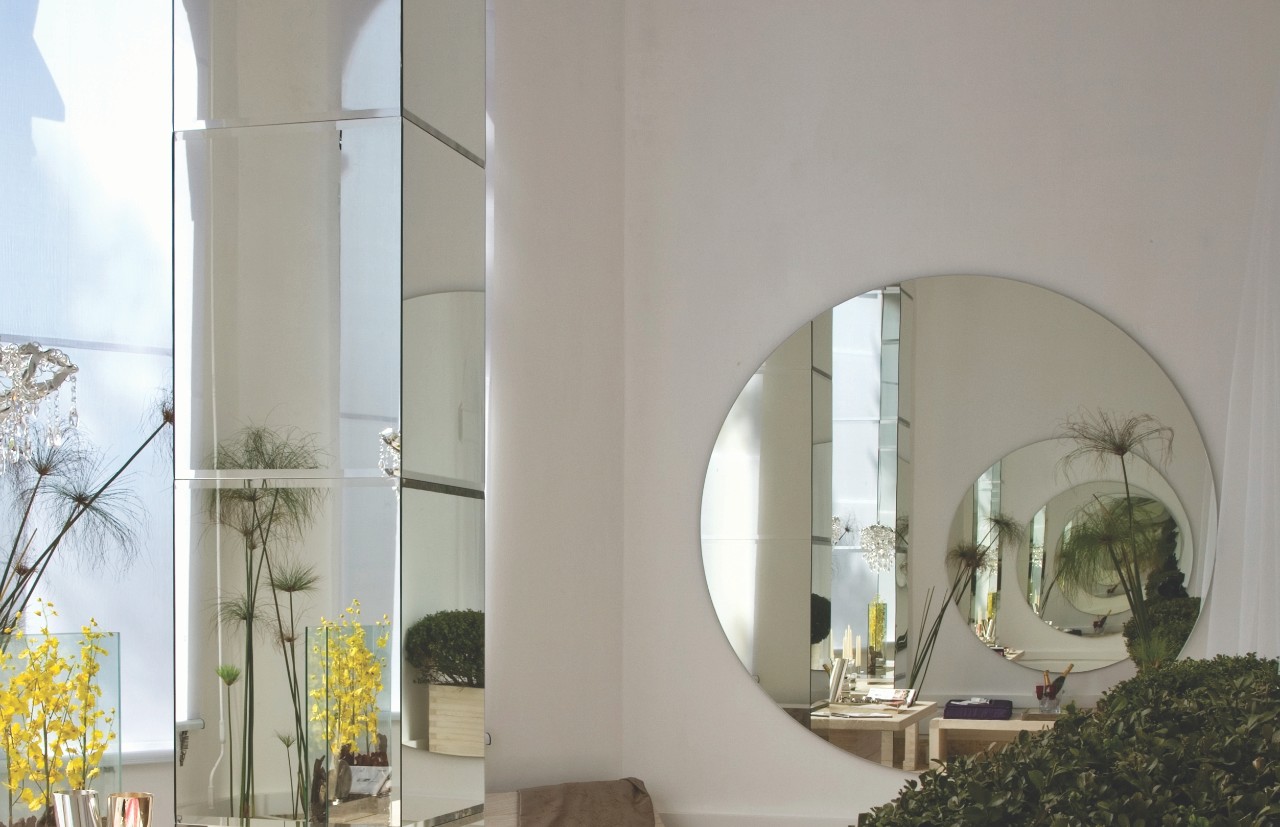
Used in interior spaces, mirror glass creates true image reflectance with virtually no distortion.
What are the benefits of mirror glass?
Mirror glass gives interior designers and architects the freedom to achieve durable, clear and non-distorted reflections for interior applications.
Reflection
Mirror glass can add depth to interior spaces and provide a sense of breadth to small rooms. It can also help to create aesthetic equilibrium by reflecting an almost flawless duplicate of the room.
Daylighting
Mirror glass can be used in interior spaces to help reflect more daylight into these areas. For example, small and confined spaces in a home or office can become larger. Dark and dull rooms can become brighter.
How is mirror glass produced?
Mirror glass starts out as clear glass. The clear glass pane is moved by conveyor to a washing station. Rotating brushes scrub the top and bottom sides of the glass, removing any oils or other contaminants. Next, sprayers rinse the glass with hot water which is demineralised so that the metals applied next in the process are not damaged.
The first metal to be applied to the glass is liquefied tin, which is applied to what will become the back of the mirror. It allows the second metal, normally silver, to adhere because silver will not stick directly to glass. This silver backing transforms clear glass into mirror glass.
The silver backing is then sealed with two coats of paint: the pane passes through a curtain-coater, a machine that runs a continuous coat of paint across the conveyor. With its fresh coat of paint, the glass then passes through an oven where the paint is cured. The second coat of paint is then applied and cured in a similar way.
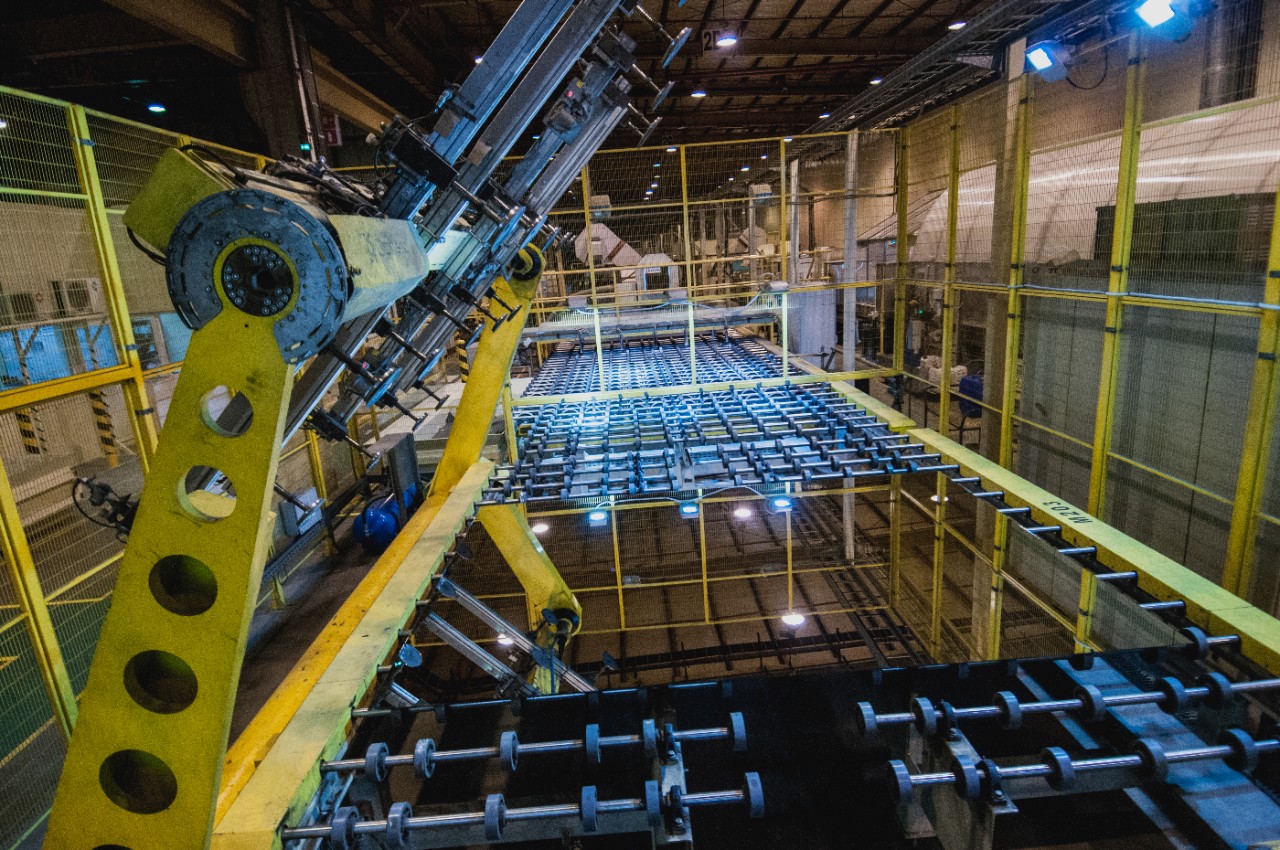
Mirror glass products produced by Guardian® Glass are copper-free. Instead of spraying copper on the glass to protect the silver coating, a protective layer is formed by the reaction of an activator solution with a metallizer. This protective copper-free layer makes the mirror glass more durable because it is more resistant to corrosion compared to conventional mirrors that contain copper.
Size and thickness
Our mirror glass products are usually available in thicknesses from 2 to 8 mm in a maximum dimension of 2,44 m x 3,66 m.

Want to know more about glass?
Guardian Glass offers you a wealth of technical notes, tools and online learning to enhance your knowledge about glass, including interactive online courses. Visit the Resource Hub to learn more!

Applications and uses of mirror glass
Mirror glass is used in a wide range of domestic and commercial applications, from bathroom mirrors, wardrobe doors, tables and decorative surfaces, to full length glass walls, vehicle mirrors and TV projection screens. Mirrored furniture items are perfect for creating an illusion of space in smaller rooms and the reflective surfaces can provide an illuminating finish to a home.
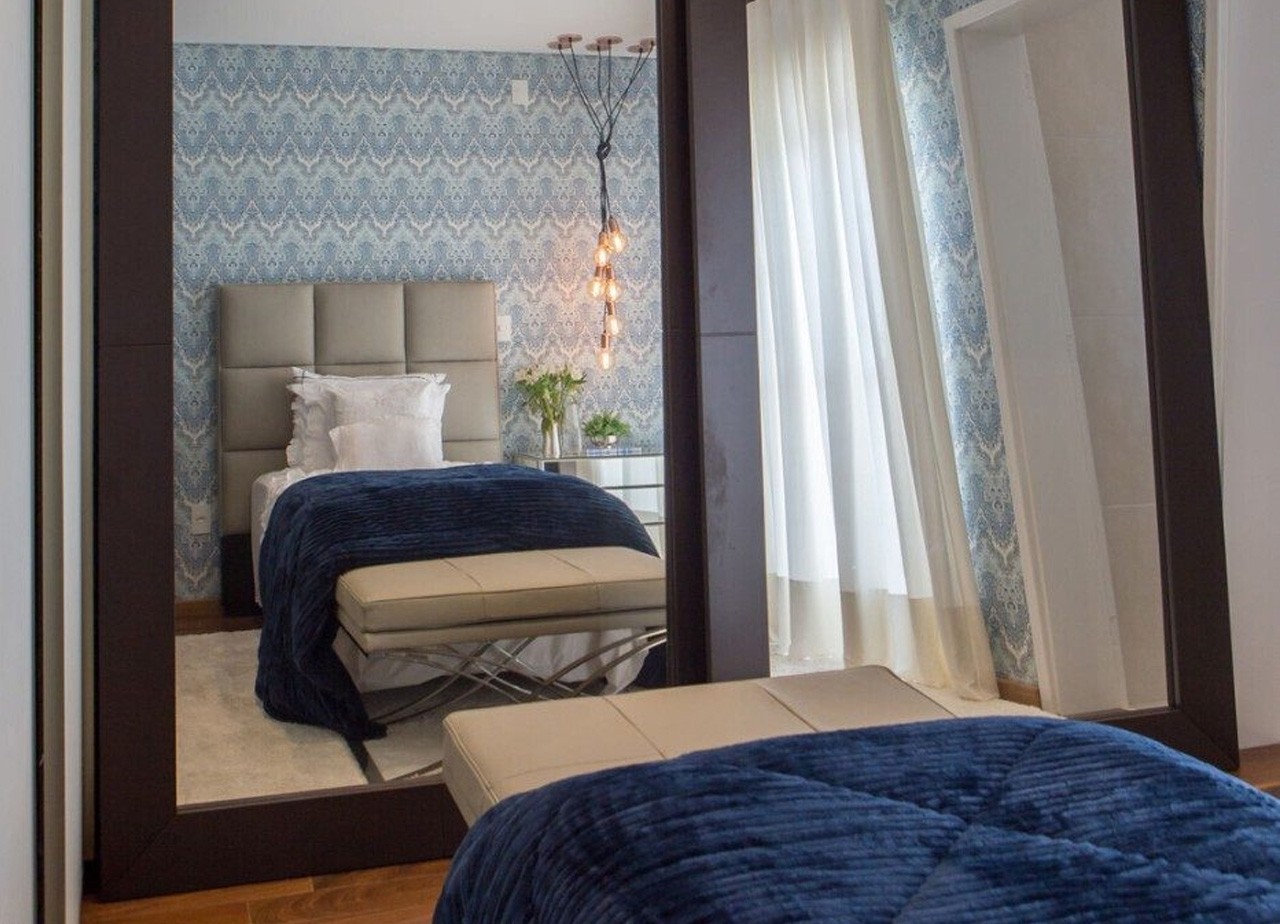
Wardrobe doors
Mirrored wardrobes are a great design element for rooms of any size. In particular, they work wonders in small rooms, where they can practically double the perceived size of the room by making it appear more spacious. Full-size mirrors are normally installed on wardrobe doors, where they can help maximize the flow of light through the room, thus creating an illusion of wider space.
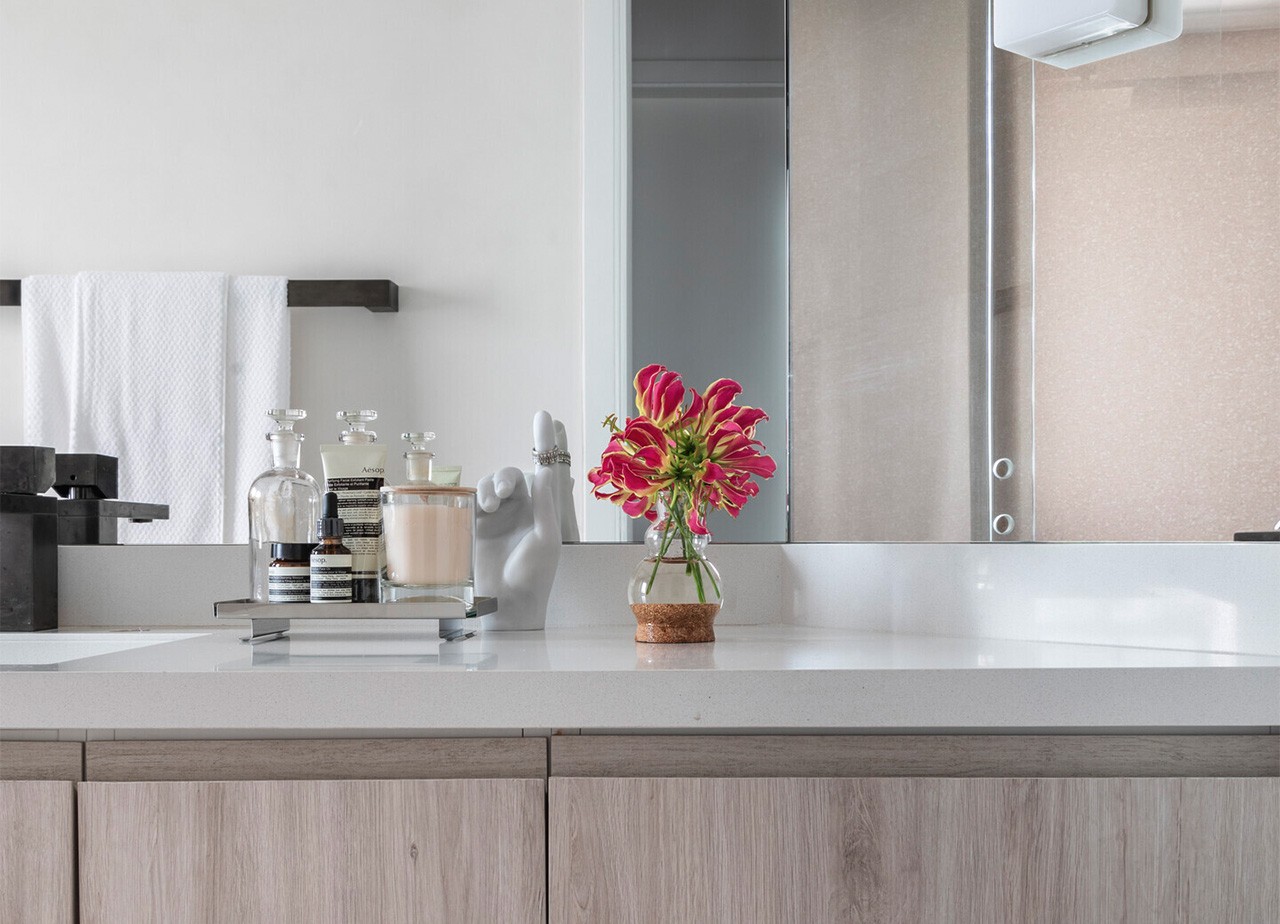
Bathroom and mirrors
Adding a mirror in a small area such as a bathroom can give the entire room a new look. As well as adding more light and space to a room, mirrors instantly make even the smallest space seem larger. Copper-free mirrors are ideal for bathrooms as they better withstand the high humidity and temperature changes inside the room than standard mirrors. Bathroom mirrors can be set into the walls like tiles or can be mounted in frames.
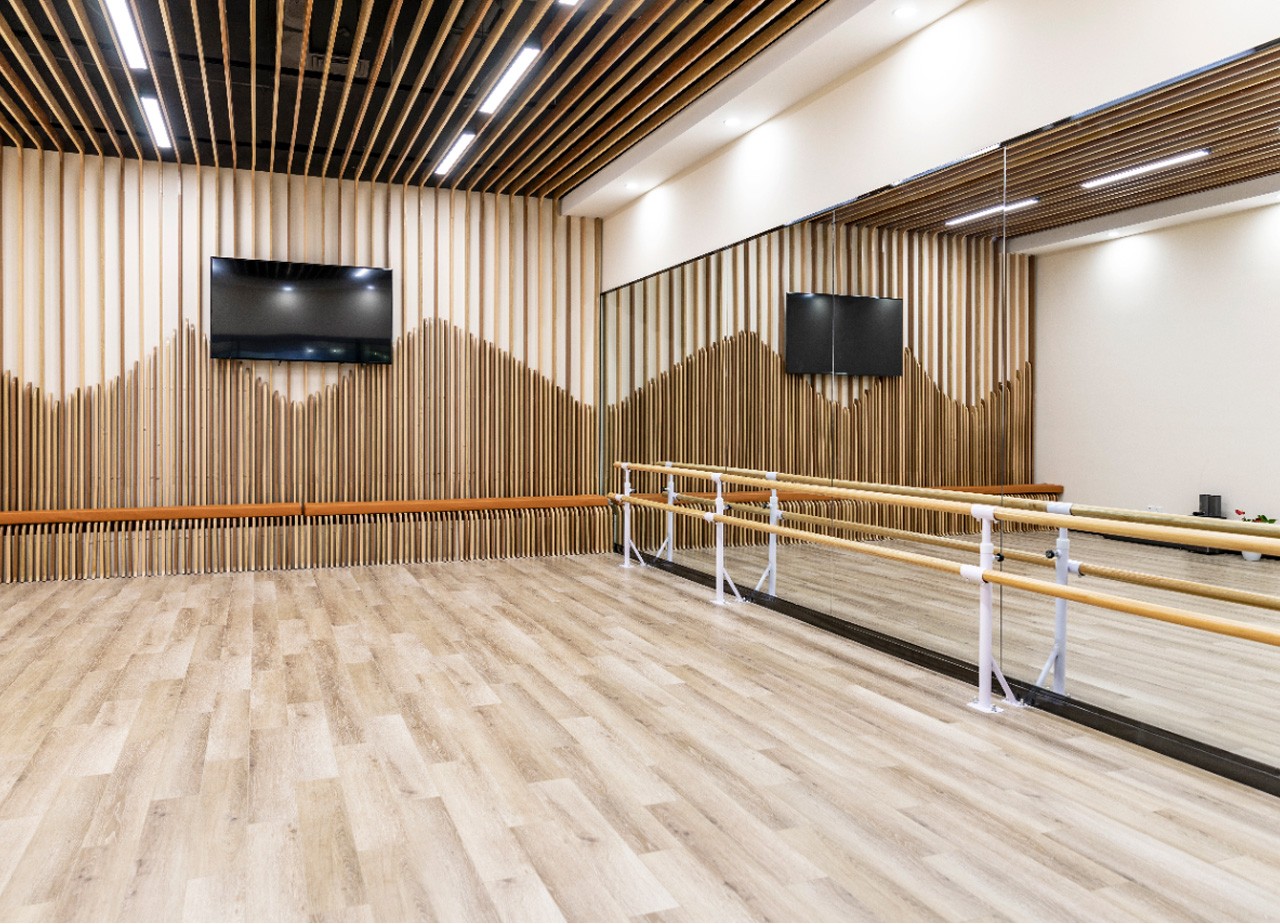
Commercial spaces
Mirror glass is used in a wide variety of commercial spaces such as fitting rooms, spas, hair salons and restrooms, as well as dance studios and gyms. Commercial spaces often require large wall mirrors.
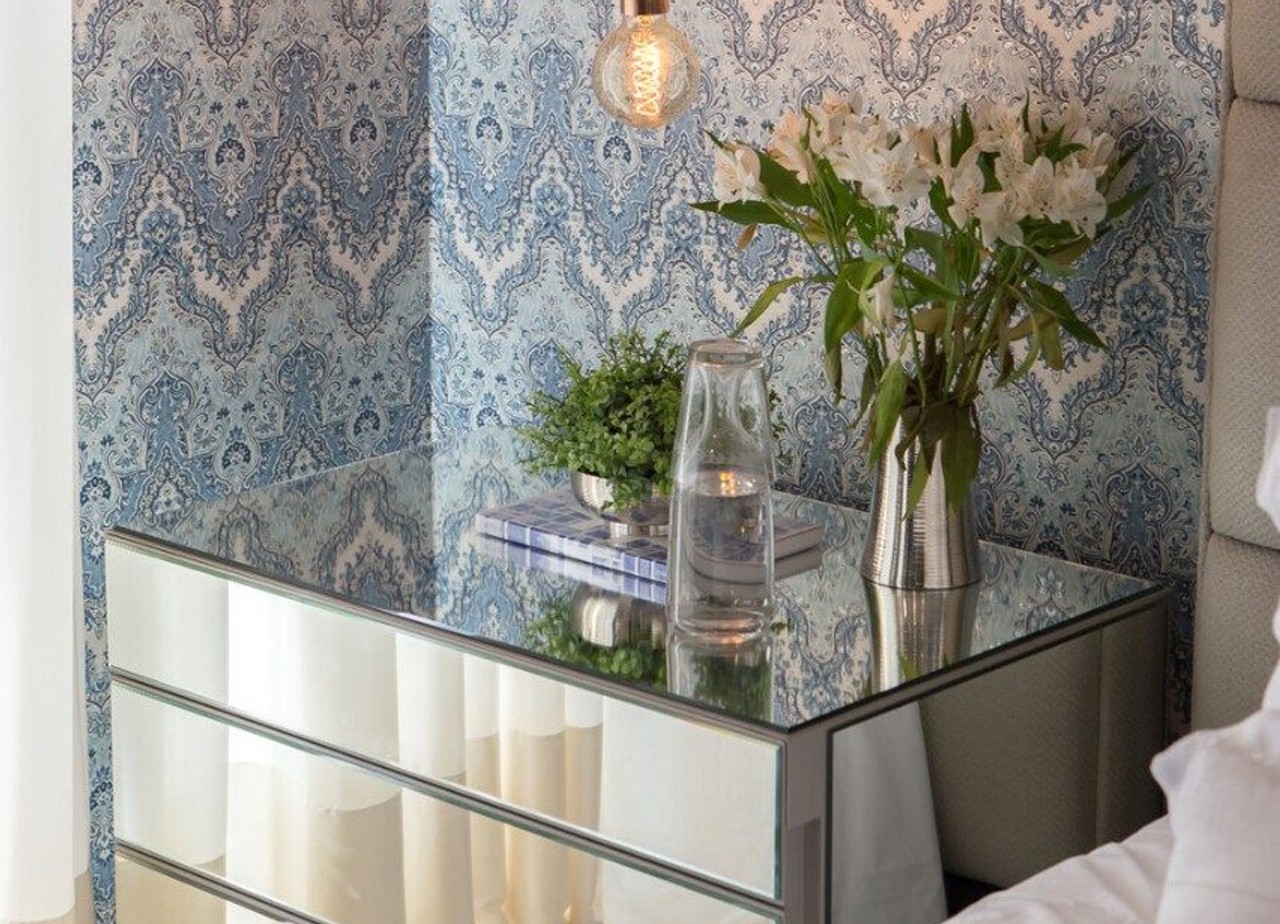
Furniture
Mirror glass can be used to create furniture such as coffee tables, chests of drawers, bedside tables or other items of furniture that reflect their surroundings and blend in with their environment, while offering an elegant, classy touch to the interior.
Some of our eye-catching projects made possible by using mirror glass:
Want to see more projects that use Guardian glass? Visit our project section.
🏨 Why choose Guardian Glass?
Guardian Glass are experts in the creation and application of glass – constantly developing new glass technologies and techniques to deliver performance glass solutions all around the world. We work hand in hand with our partners and customers across the supply chain to help meet your design requirements. In other words, when it comes to glass, we help you see what’s possible.
What's the difference between mirror glass and reflective glass?
While mirror glass is opaque and is produced using the wet coater process, reflective glass has a transparent coating applied on its surface. This coating partially reflects the light and provides the glass with different levels of reflectivity. If a glass product is highly reflective, it will provide some privacy to people during the daylight hours because the reflections on the external glass surface disrupt the view from the outside, while still allowing building occupants views to the outside. Reflective glass is typically used in façade applications to provide solar control and help reduce the amount of solar energy that enters a building.
Our mirror glass products:
-

Guardian UltraMirror®
Guardian UltraMirror® glass combines incredibly clear reflections with outstanding durability and corrosion resistance. It’s ideal for interior spaces where maintaining a consistent 'like-new' appearance is crucial – such as retail and hospitality areas.
See more

